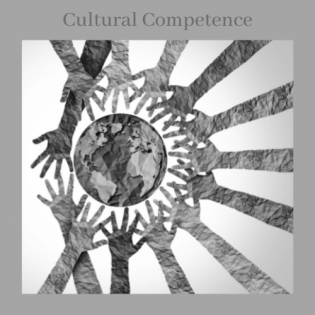Cultural Competence
What are the many ways people contribute to their community through the values and practices of their family and culture?
This Cultural Competence Facilitator's Guide is made up of a set of discussions and activities to be used by a family, club, or classroom to examine what it means to be culturally competent in today's society. We provide materials and guidance for any adult working with youth from ages 5 to 15 to build their awareness of the richness of cultures in the world and respect for diverse people. With a vision of building a life of generosity and community engagement, these activities engage youth in taking personal responsibility for the good of all through words, intentions, and actions. These activities align with SEL.
We define culture and explore the cultural traits of individuals and the group collectively.
The key to cultural competence is learning about cultures around the world. The book Children Like Me sparks curiosity about different cultures. Youth make a simple keychain to represent the different cultures they can learn about with the key that helps them open doors.
Looking around the room, we may see many skin colors and tones. These differences occur all over the world. In this lesson we use the terminology of race and ethnicity and look at data to identify the makeup of our community or state. Young people may take action to promote representation of the groups that are under-represented in the community.
One of the keys to unlocking cultural competence is reading diverse books with characters and locations that represent a variety of cultures. In this activity, young people define and discuss the value of representation. They do an audit of a book collection to identify representation and gaps. As a goal, they seek to fill gaps in representation by adding books to the collection.
This lesson explores the language of disability and the importance of asking people about themselves with curiosity rather than treating disabilities as taboo. We learn to use people-first language.
Young people explore demographics and definitions to better understand some of the disabilities of their peers. They discuss how we can support one another's unique expressions of self.
In this lesson, youth become aware and gain empathy for the discrimination people experience because of their race, age, gender, and other reasons. The group discusses ways to be inclusive. A Mix it Up Day changes our familiar boundaries and helps us connect to new people.
Why do we have cultural recognition months? The U.S. calendar of holidays includes months like National Hispanic Heritage Month and National Women's History Month in recognition of groups that have been historically underrepresented in the U.S. This lesson explores why and how we put these spotlights on specific months.
In this lesson we learn the history of the Indigenous people who lived in our specific area. We learn that language matters, and there is a respectful way to talk about the heritage of a person who was first to live in an area.
In this lesson, we broaden our awareness of different cultures and how they celebrate holidays. An optional service project includes writing letters to request diverse holidays be added to the community calendar, if they aren't already observed.
Our communities may have people from many cultures and there may be many different languages spoken. Sparked by a playful video of kids teaching other kids their languages, we explore the languages represented in our communities.
One of the ways we identify ourselves is through the culture of our gender identity. This may include our gender and how we express ourselves through our clothing, hair, and what we like to do and who we like to spend time with. This lesson raises awareness of the variety of ways people express who they feel they are.
Cultures are sometimes represented through clothing items like head wear or colors. These clothing items can be very meaningful and important, and it is respectful to learn about others and what their cultural expression means to them. It is never okay to mock someone for what they wear or to say they shouldn't wear it because it is different. This lesson raises awareness of the meaning of cultural expression and the danger of stereotypes.
Through the voices of an immigrant and refugee, youth gain empathy and understanding of the experience of leaving your home for a new place.
Youth reflect on the lessons they have learned through building cultural competence in this unit. They identify an adult they trust to have critical, or difficult, conversations.
This activity explores the difference between anti-racism, which includes active steps away from injustice, and non-racism, which is a passive description.
This lesson raises awareness of the different ways mental health may reflect in how we think, feel, and act. We can prioritize mental health, like we do with our physical health. This lesson includes a slide deck with tools for what to do when our mental health needs attention.
Expanding on the lesson about critical conversations, participants explore ways to use their voices for good. The book Say Something by Peter Reynolds encourages readers to find their own way to express their voice - through speaking, poetry, song, and other ways.
